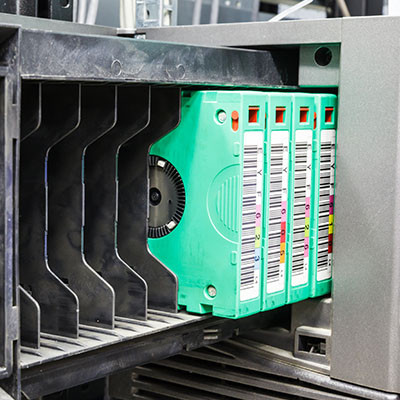PCSOFT Blog
6 Reasons for Tape Backup (and 1 Huge Reason to Replace It)
Tape backup used to be the go-to backup solution for businesses, but it’s since lost its luster in favor of digital backup solutions. You might still find some uses for it, if you find a good enough excuse. Today, we want to examine why you might still use tape backup, even though a Backup and Disaster Recovery (BDR) solution far outshines it.
6 Admittedly Bad Reasons to Keep Tape Backup
Businesses want redundancy more than anything else, so naturally, they will implement solutions that help them reach that goal.
Digital backup has mostly taken the place of tape backup, as it’s more redundant in a lot of ways. There’s too much room for error with tape on both the technical and the user side of operations. Still, you can make a case for tape backup, albeit it is a shaky one at best.
These are the most likely culprits for keeping tape backup around, even if your business certainly doesn’t need it any longer (if you use BDR, of course).
Longevity and Reliability
Even if it’s largely been replaced by BDR, tape backup is reliable—particularly over long periods—provided it’s stored in a proper location with a very stable environment. Hard drives, especially modern SSDs, have a much shorter shelf life when literally just sitting on a shelf.
Storage Capacity
Tape backup can keep large amounts of data stored for a long time. It’s expensive to do so, but it’s less expensive than some other options.
Regulations and Retention
Tape backup complies with regulations for various industries, organizations, and entities, even if other backup solutions do it better.
Larger Data Sets
You might find bandwidth limitations get in the way of backing up large data sets if you’re using a cloud-based system. Tape backup doesn’t have this issue, as it’s backed up locally rather than online.
Older Legacy Systems
Businesses still using tape probably have more than one archaic system in their IT infrastructure. These legacy systems might not be compatible with a modern backup solution, so tape gives you more time to adjust during the upgrade process.
Offline Backups That Don’t Depend on the Cloud
Cloud backups are fine and dandy, but a physical backup might come in handy if you can’t connect to the cloud for whatever reason. They’re great for situations where you encounter a system failure, natural disaster, or even a hacking attack that targets other parts of your infrastructure. That’s why we recommend the 3-2-1 backup rule—keep your data on three different mediums in at least two locations, one of those being offsite.
BDR is Still Better, Though
We’d be remiss to actually recommend tape when a better solution is staring you in the face.
Backup and Disaster Recovery (BDR) solutions can take incremental backups of your data as often as every 15 minutes, meaning that you don’t encounter challenges with large data sets. You’ll enjoy both off-site and on-site backups, too. When redundancy is the name of the game, you can rely on BDR to get the job done.
Learn more and get started by calling us today at 02 98730080.


Comments